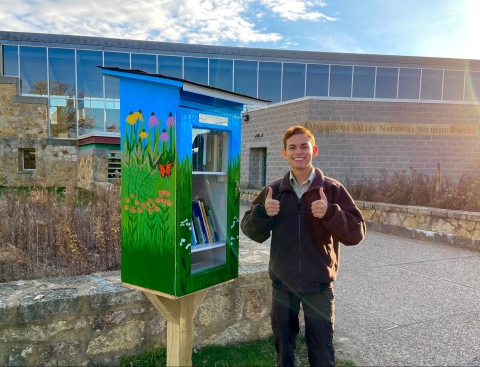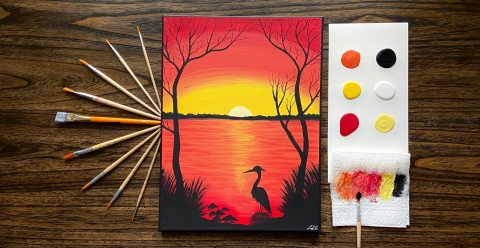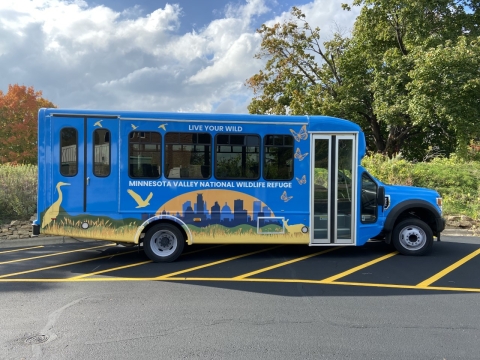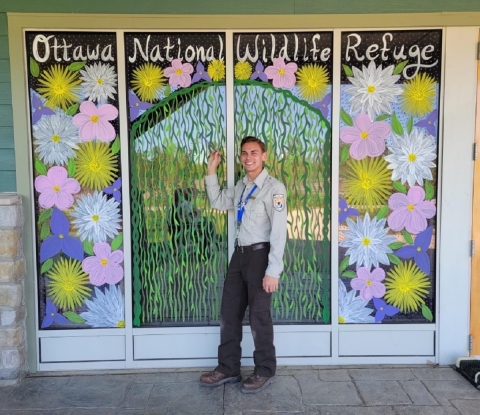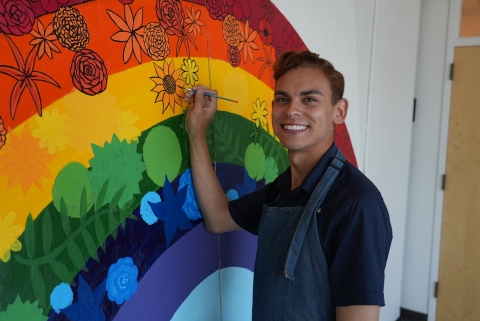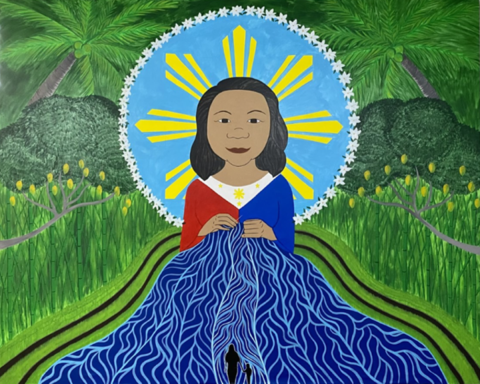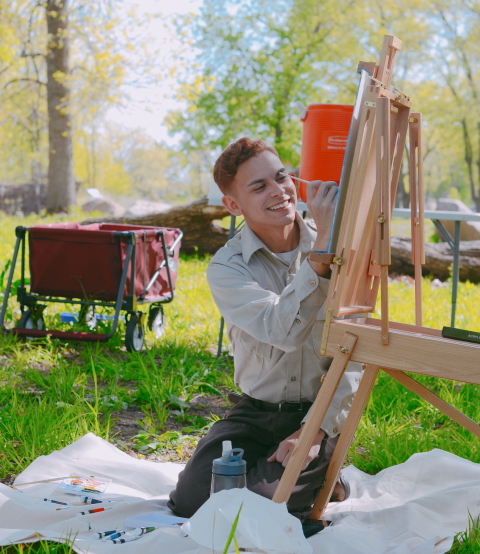Logan Sauer wants to offer something different for national wildlife refuge national wildlife refuge
A national wildlife refuge is typically a contiguous area of land and water managed by the U.S. Fish and Wildlife Service for the conservation and, where appropriate, restoration of fish, wildlife and plant resources and their habitats for the benefit of present and future generations of Americans.
Learn more about national wildlife refuge visitors.
“Some of our traditional activities we offer here on refuges might not be appealing or accessible to some people,” he told me.
Logan, the new visitor services manager at Iroquois National Wildlife Refuge, outside of Buffalo, New York, can relate. Although he sees the appeal and importance of activities such as hunting, fishing, and birdwatching in his line of work, he doesn’t partake in them. And that’s okay, he explained — you don’t need to do any of those things to meaningfully connect with nature.
So, when he joined the Service some years ago, Logan discovered he could bring conservation to people in a new way: through art.
More than a hobby
Logan always loved painting in school as a kid, and his art teachers let him know he had talent, but he never considered it more than a casual hobby. He certainly never thought that talent would merge with his professional life. But sure enough, while working as a visitor services intern at Moosehorn National Wildlife Refuge in Maine after graduating from college, Logan was given the chance to lead guided painting classes for refuge visitors.
The first scenes he chose to paint were simple but beautiful — one a glowing sun setting over mountains and a lake; the other, a nighttime silhouette of a lone deer backlit by a dazzling galactic spiral of stars. The classes were a smashing success. Encouraged by the response, Logan kept at it, and what could have easily been a one-off event flourished into years of creative conservation outreach.
At his subsequent visitor services positions at Ottawa National Wildlife Refuge in Ohio and then Minnesota Valley National Wildlife Refuge, Logan was given free rein to use art to strengthen community relations and expand partnerships with new organizations, schools and cultural centers. Visitors to the two refuges today will see his art displayed on benches, canoe trailers and an adorable tiny library.
I could wax poetic about Logan’s great work, but a picture says a thousand words.
Stepping stones to nature
In Logan’s mind, using art as an outreach tool is about more than just making pretty pictures.
“I see it as a way of building ‘stepping stones of engagement,’” he said.
The idea, which he borrows from the Urban Wildlife Conservation Program, is to reach new audiences in fresh and innovative ways — like through art — then gradually build upon those experiences to encourage a deeper connection to nature and the Service’s mission.
For example, by sitting people down in front of a salt marsh salt marsh
Salt marshes are found in tidal areas near the coast, where freshwater mixes with saltwater.
Learn more about salt marsh and teaching them to paint it, you can foster a direct connection and appreciation of its value in a way that’s fun and accessible. Then, gradually you can fold in the nitty-gritty science-y details — the ecological value of these wetlands and why it’s important we conserve them. The outcome? Maybe participants begin to spend more time outside or regularly visit the refuge; maybe they’ll decide to volunteer or give back to conservation in some way. Or maybe they’ll just be happy that we do what we do.
Over several years, Logan has successfully woven concepts like monarch migration routes and habitats, bird collision prevention and wetland ecology into his art.
“With these programs, I ultimately wanted people to enjoy and remember their time at the refuge, and hopefully be inspired to support our mission,” Logan said.
But he also sees painting as a powerful tool to explore personal themes like culture and identity and their close relationship to the natural world. Logan’s been able to share important parts of his life story, including his Filipino heritage and his LGBTQ+ identity. In doing so, he hopes he can empower others to do the same.
"The inspiration for the 'Keep Blooming' mural came from a quote from the Disney movie Mulan. The Emperor said to Mulan, 'the flower that blooms in adversity is the rarest and most beautiful of all.' It makes me think what life was/is like for me and many LGBTQ+ individuals and the struggles we face because of the hate and pushback we get from some in our society. But the LGBTQ+ community is resilient, and we will create a future that is safe, accepting, and inclusive for all. This work highlights the diversity of colors and shapes that flowers and plants can have in the natural world, and I think that relates a lot to our community and pride."
"This mural, called "Sewing our Path" was inspired by my Filipino heritage and the matriarchs of the Filipino community. It features a variety of plants important in Filipino culture like sampaguita flower, palm, mango, bamboo, and rice. The water below represents the Pacific ocean that was crossed on the journey to the United States. My grandmother is depicted in this mural and holds a needle and sews the path to success for my mother and I."
Destination: Iroquois National Wildlife Refuge
Logan’s set aside his paintbrush for the time being, as he navigates the intricacies (and workload) of his new position at Iroquois Refuge. When you’re visitor services manager, things move fast, and every day is different. Logan manages nearly 50 refuge volunteers, builds internship workplans, runs social media, and generally keeps the visitor center running smoothly from sunup to sundown. Ask him what he does in his free time, and he may smile and ask you, “What free time?”
Still, he’s determined to make Iroquois Refuge a destination — a place where nature, art and culture merge — and he’s already on the hunt for community partnerships that will create that nexus. “I want Iroquois to be part of the fabric of the community and seen as a reliable partner."
Logan’s grateful for the unexpected journey his career has taken him on — and excited for whatever comes next. “It’s been awesome. I never knew that this was something that could be done until I took that leap and made it happen myself.”


